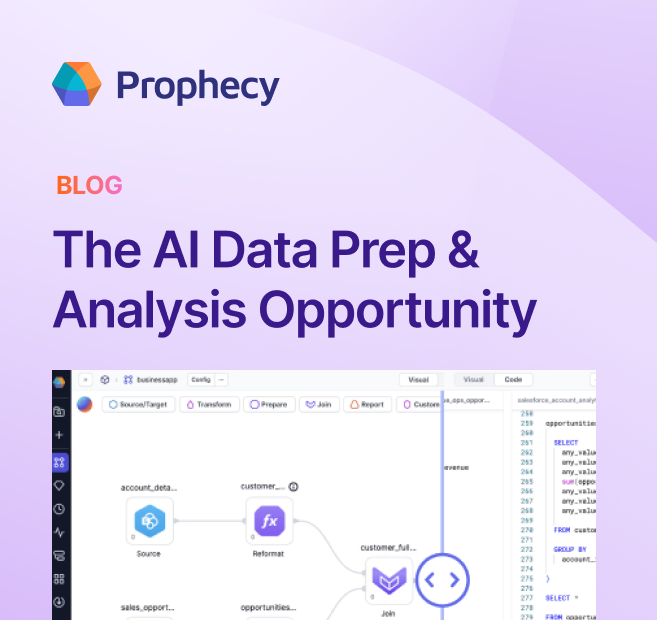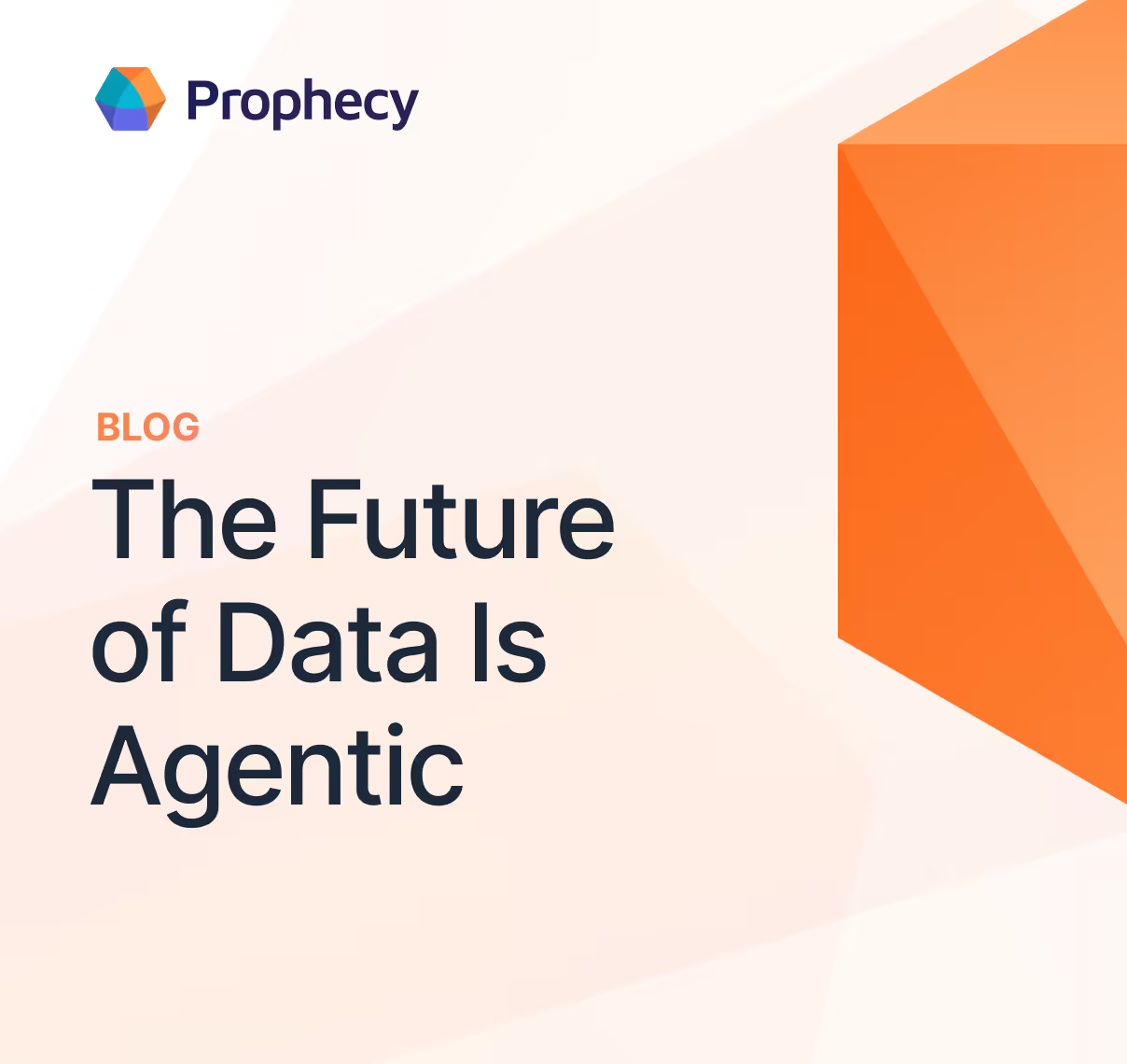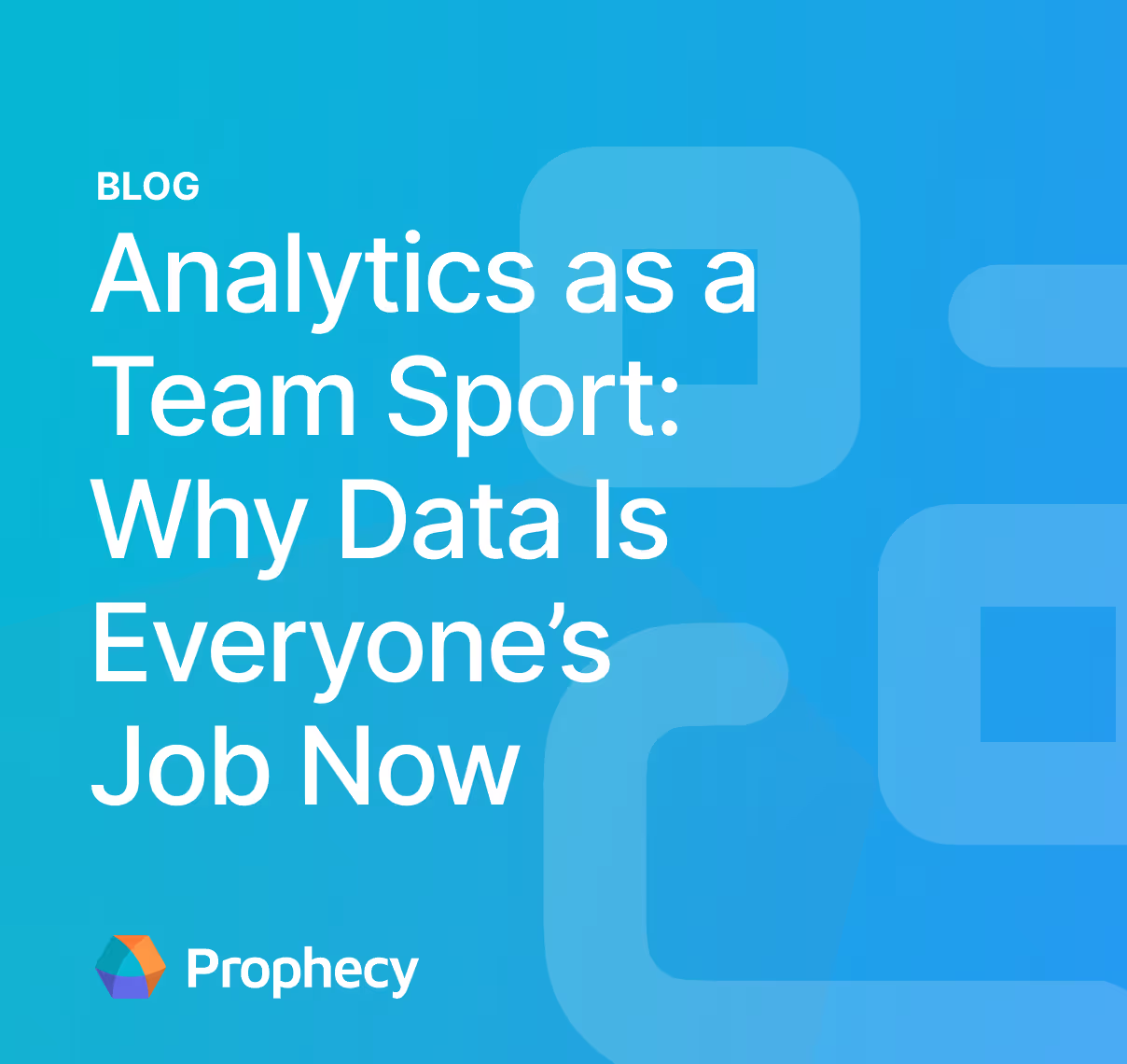Batch or Stream Processing? Choosing the Right Path for Your Business Needs
Discover the key differences in batch vs stream processing to optimize your data strategy, reduce costs, and improve efficiency. Choose the right approach today.
As a data engineer, you're constantly making architectural choices that shape how your organization handles data. One fundamental decision stands out: batch vs stream processing for your data pipelines.
The difference is simple—it's all about timing. Batch processing handles data in large, scheduled chunks (think weekly reports), while stream processing manages data continuously as it arrives (like monitoring your heart rate during exercise).
This isn't just a technical choice. It impacts everything from market responsiveness to infrastructure costs. Your specific use cases, existing tech stack, and business needs should guide this decision.
Comparing batch vs stream processing
Here are the biggest differences between batch and stream processing.
Processing timing and execution
Batch processing operates on predefined schedules, collecting and processing data in chunks during specific time windows. This approach dates back to early computing with punch cards yet remains vital for handling large-scale, repetitive data jobs.
Systems execute tasks automatically without user intervention, enabling greater automation and efficiency for operations that don't require immediate results. Batch jobs typically run sequentially or in parallel based on defined dependencies, often during off-peak hours to optimize resource utilization.
Data input and flow
Stream processing works with continuous data flows, handling information as it arrives rather than waiting to accumulate batches. The role of data extraction is critical here, as streaming systems process each record or event individually as it enters the system. This fundamental difference enables real-time data processing from various sources simultaneously.
While batch processing requires complete datasets before execution begins, streaming systems process each record or event individually as it enters the system. Effective data ingestion strategies enable this continuous processing, allowing organizations to work with fresh data constantly.
Latency and responsiveness
The timing difference between these approaches directly impacts system responsiveness. Batch processing accepts higher latency as a trade-off for efficiency, with results available only after entire batches complete—potentially hours or days after data collection.
Stream processing delivers near-instantaneous responses, processing data within milliseconds or seconds of arrival. This low-latency characteristic makes streaming essential for time-sensitive applications where delayed insights could mean missed opportunities or increased risks.
Architectural complexity
Batch architectures offer relative simplicity with straightforward, predictable execution patterns and well-established error handling mechanisms. Stream processing requires more sophisticated data pipeline architectures to manage continuous data flows, implementing complex fault tolerance, state management, and dynamic scaling capabilities.
Systems like Apache Kafka or Flink must maintain processing guarantees despite potential failures or data inconsistencies. This complexity difference extends to implementation and maintenance requirements, with streaming typically demanding more specialized expertise and data engineering skills.
Resource utilization
Batch processing optimizes resource usage through scheduled execution, creating predictable resource demand patterns and allowing for efficient allocation during off-peak hours. Stream processing requires constant resource availability to handle unpredictable data volumes as they arrive, potentially leading to higher overall resource consumption.
Streaming systems must scale dynamically to accommodate fluctuating workloads while maintaining performance guarantees, a critical aspect of cloud data engineering, whereas batch systems can allocate resources based on known dataset sizes and processing requirements.
Output and results delivery
The fundamental nature of results differs significantly between approaches. Batch processing delivers complete, final results after processing entire datasets, making it ideal for comprehensive reporting and thorough analysis.
Stream processing produces incremental, continuous outputs that evolve as new data arrives, enabling real-time dashboards and ongoing insights. This difference affects how organizations consume and act upon the processed information, with batch supporting deliberate decision-making and streaming enabling immediate responses.
The following table highlights the primary differences between batch vs stream processing approaches based on the characteristics discussed:
Diving into batch processing
Batch processing excels in situations where efficiency and thoroughness outweigh immediacy. Financial operations like payroll processing and reconciliation benefit from batch processing's ability to handle large volumes with complete accuracy.
System maintenance functions including data backups and integrity checks typically run during off-hours as batched operations. Reporting workflows generating daily, weekly, or monthly business intelligence utilize batch processing to compile comprehensive results from complete datasets.
The ETL process of moving data between systems often leverages batch processing for its reliability and resource efficiency when handling substantial data volumes.
Advantages of batch processing
Batch processing delivers substantial cost advantages by utilizing computing resources during off-peak hours, significantly reducing operational expenses compared to always-on alternatives. It offers exceptional scalability for massive datasets through optimized resource allocation and distribution techniques, enabling efficient scaling of ETL pipelines and faster data transformations.
Processing consistency remains a key strength, ensuring uniform handling across entire datasets without the variability that can affect stream processing. Error handling capabilities in mature batch systems provide robust recovery mechanisms, often automatically resolving issues without manual intervention.
The relative architectural simplicity compared to streaming solutions reduces implementation complexity and maintenance requirements for engineering teams.
Disadvantages of batch processing
The high latency inherent to batch processing creates information delays that may impact business responsiveness, with insights only available after complete batch execution. Resource utilization can spike dramatically during batch windows, potentially causing performance issues for other systems sharing infrastructure.
The lack of interactivity makes batch processing unsuitable for applications requiring immediate feedback loops or user interaction. Data freshness suffers between processing intervals, creating potential blind spots when conditions change rapidly.
These limitations have pushed many organizations toward hybrid approaches that leverage both batch and streaming capabilities.
Batch processing in the big data era
The explosion of big data has transformed batch processing while reinforcing its essential role in modern data architectures. Today's batch systems handle petabyte-scale datasets that would overwhelm real-time processing capabilities, implementing sophisticated parallel processing frameworks like Hadoop, Spark, and cloud-native solutions.
Machine learning workloads frequently leverage batch processing for model training on comprehensive historical datasets, benefiting from the complete data picture batch provides. Modern batch systems increasingly incorporate containerization and orchestration technologies like Kubernetes to improve resource utilization and deployment flexibility.
Many organizations implement Lambda architectures combining batch processing's thoroughness with streaming's immediacy, processing data through parallel paths to serve different analytical needs. Technologies like Apache Beam now provide unified programming models that abstract batch and stream processing differences, allowing engineers to implement logic once and deploy in either mode based on requirements.
Advances in distributed computing continue expanding batch processing capabilities while reducing execution times, narrowing the gap with stream processing for many use cases while maintaining batch's inherent efficiency advantages for large-scale workloads.
Explaining stream processing
Stream processing thrives in time-sensitive applications where immediate insight translates directly to business value. Financial institutions implement real-time fraud detection systems that analyze transaction patterns as they occur, flagging suspicious activities before fraudulent transactions complete.
Industrial environments deploy streaming analytics for equipment monitoring, processing sensor data continuously to detect anomalies indicating potential failures. Digital businesses leverage streaming for real-time user behavior analysis, personalizing experiences based on current interaction patterns rather than historical data, often dealing with the challenges of unstructured data.
Advancements in AI allow for building generative AI applications that utilize stream processing to generate real-time responses or content. Algorithmic trading platforms depend on stream processing to analyze market movements and execute trades within milliseconds of detecting advantageous conditions.
Transportation networks utilize streaming data to optimize routing and logistics in response to changing conditions like traffic, weather, or vehicle availability.
Advantages of stream processing
Stream processing delivers exceptional time-to-insight through near-immediate data handling, enabling decisions based on the most current information available. The technology creates ongoing visibility into patterns and anomalies as they develop rather than after they've concluded.
Automated response capabilities allow systems to trigger actions based on predefined conditions without human intervention, dramatically reducing response times. The continuous processing model eliminates batch windows and associated delays, providing uninterrupted analytical capabilities.
Modern streaming architectures implement sophisticated scalability features that dynamically adjust to handle fluctuating data volumes while maintaining performance guarantees.
Disadvantages of stream processing
Stream processing introduces significant architectural complexity through distributed processing requirements, sophisticated state management, and fault tolerance mechanisms. The continuous processing model demands higher resource utilization compared to batch alternatives, with systems continuously consuming compute resources rather than during defined intervals.
Implementation costs typically exceed batch solutions due to both infrastructure requirements and the specialized engineering expertise needed. State management across distributed systems creates particular challenges for operations like windowed aggregations or session analysis.
Testing and debugging streaming applications presents unique difficulties, as reproducing exact data flow conditions becomes substantially more complex than with deterministic batch processes.
Modern big data and stream processing
Stream processing has evolved dramatically to address today's big data realities, with modern architectures handling millions of events per second while maintaining processing guarantees. Streaming technologies now implement sophisticated exactly-once processing semantics across distributed systems, ensuring data integrity despite potential failures or network issues.
Event-time processing capabilities allow systems to handle out-of-order data arrival, essential when processing information from widely distributed sources with varying latencies. The integration of stream processing with machine learning has created new capabilities for real-time model inference and online learning, continuously updating predictive models as new data arrives.
Hybrid architectures like Kappa increasingly challenge traditional Lambda approaches, treating all data processing as streaming while maintaining historical views through retention policies. Cloud providers now offer fully-managed streaming platforms that reduce operational complexity, allowing organizations to implement streaming solutions without extensive infrastructure expertise.
Edge computing continues pushing streaming capabilities closer to data sources, processing information locally before transmission to reduce latency and bandwidth requirements. The convergence of streaming with technologies like Complex Event Processing (CEP) enables sophisticated pattern detection across multiple data streams, identifying meaningful event sequences in real-time.
How to choose between batch vs stream processing
Here are the key considerations you must take into account when choosing between batch and stream processing.
Data latency requirements
Ask yourself how quickly you need results. If you need real-time or near-real-time insights (think fraud detection or system monitoring), stream processing is your answer. If delayed results work fine (like daily reports), batch processing fits the bill.
Volume and frequency
Look at your data volume and how often it arrives. Batch processing works best with large volumes processed at scheduled times. Stream processing shines with continuous data flows needing immediate handling.
Resource considerations
What can your infrastructure handle? Stream processing needs always-on systems with higher computational demands. Batch processing can use resources during off-peak hours, often costing less.
Business use case
Match your approach to your business needs and consider your data integration challenges. Financial reconciliation and report generation work well with batch processing, while real-time analytics and IoT applications typically need stream processing.
Relieving the data engineering load
Whether you choose batch or stream processing, data engineers face heavy workloads from complex business data transformations. Prophecy eases this burden in several ways, helping you transform data efficiently:
- Low-code visual interface - Low-code visual interfaces offer a user-friendly way to design data pipelines, potentially reducing development time while providing a degree of control.
- Automatic code generation - Automatic code generation can assist in creating Spark code by reducing the need for writing extensive boilerplate.
- Git-based version control - Collaborate using Git integration to support data pipeline governance.
- Metadata-driven scheduling - Streamline pipeline execution with efficient scheduling powered by metadata.
- Comprehensive testing framework - Ensure data quality and pipeline reliability with a robust testing framework.
Efficient data transformation is imperative in the modern organization. Learn how the future of data transformation is evolving and the ETL modernization steps enterprises need to take to account for these changes.
Ready to give Prophecy a try?
You can create a free account and get full access to all features for 21 days. No credit card needed. Want more of a guided experience? Request a demo and we’ll walk you through how Prophecy can empower your entire data team with low-code ETL today.
Ready to see Prophecy in action?
Request a demo and we’ll walk you through how Prophecy’s AI-powered visual data pipelines and high-quality open source code empowers everyone to speed data transformation
Get started with the Low-code Data Transformation Platform
Meet with us at Gartner Data & Analytics Summit in Orlando March 11-13th. Schedule a live 1:1 demo at booth #600 with our team of low-code experts. Request a demo here.
Related content
A generative AI platform for private enterprise data
Introducing Prophecy Generative AI Platform and Data Copilot
Ready to start a free trial?
Lastest posts

The AI Data Prep & Analysis Opportunity

The Future of Data Is Agentic: Key Insights from Our CDO Magazine Webinar


